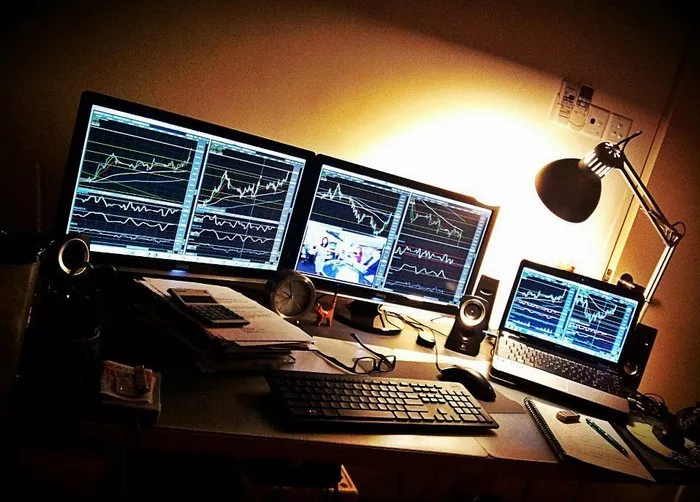Forex trading, also known as foreign exchange trading, involves the buying and selling of currencies on the global market. As one of the most liquid markets in the world, it offers numerous opportunities for profit, but it also requires a solid understanding of its mechanics. Whether you’re a complete beginner or someone looking to sharpen your skills, understanding the basics is crucial to your success. This article will outline 6 essential steps to help you get started in Forex trading, providing you with the knowledge and tools needed to navigate this dynamic market confidently.
1. Understand the Forex Market
What is Forex Trading?
Forex trading is the process of exchanging one currency for another to profit from changes in exchange rates. The Forex market is decentralized, meaning it operates across various financial centers worldwide, including London, New York, Tokyo, and Sydney. Unlike other markets, such as stocks or commodities, Forex operates 24 hours a day, five days a week, allowing traders to respond quickly to market movements.
Currency Pairs Explained
In Forex trading, currencies are traded in pairs, such as EUR/USD or GBP/JPY. The first currency in the pair is called the base currency, and the second is the quote currency. When you buy a currency pair, you are purchasing the base currency and selling the quote currency. Understanding how currency pairs work is fundamental to making informed trading decisions.
Market Participants
The Forex market is comprised of various participants, including central banks, financial institutions, hedge funds, corporations, and individual traders. Each group has its own motivations and strategies, contributing to the market’s liquidity and volatility. As a new trader, understanding the roles of these participants can provide valuable insights into market movements.
2. Develop a Solid Trading Plan
Setting Clear Objectives
Before diving into Forex trading, it’s essential to establish clear trading objectives. Determine what you hope to achieve through trading, whether it’s generating supplemental income, building wealth, or simply gaining experience. Your goals will influence your trading strategy, risk tolerance, and the amount of time you dedicate to trading.
Choosing a Trading Strategy
There are various trading strategies to choose from, each suited to different goals and risk profiles. Some popular strategies include:
Scalping: Involves making multiple trades throughout the day to profit from small price movements. This strategy requires a high level of focus and quick decision-making.
Day Trading: Similar to scalping, but with fewer trades per day. Positions are closed before the market closes, avoiding overnight risk.
Swing Trading: Positions are held for several days or weeks to profit from medium-term market movements. This strategy requires patience and a good understanding of technical analysis.
Position Trading: Long-term strategy where trades are held for weeks, months, or even years. This approach requires a deep understanding of market fundamentals and a tolerance for larger price fluctuations.
Risk Management
Effective risk management is crucial in Forex trading. Determine how much capital you are willing to risk on each trade and set stop-loss orders to limit potential losses. A common rule is to risk no more than 1-2% of your trading capital on a single trade. Additionally, consider the overall risk-reward ratio of your trades to ensure that your potential profits outweigh the risks.
See Also: 8 Tips on How to Open a Forex Trading Account
3. Choose a Reliable Forex Broker
Regulation and Security
Selecting a reputable Forex broker is one of the most critical decisions you’ll make as a trader. Look for brokers that are regulated by recognized financial authorities, such as the Financial Conduct Authority (FCA) in the UK, the Commodity Futures Trading Commission (CFTC) in the US, or the Australian Securities and Investments Commission (ASIC). Regulation ensures that the broker adheres to strict standards and provides a level of security for your funds.
Trading Platforms and Tools
The trading platform provided by your broker will be your primary tool for executing trades and analyzing the market. Ensure that the platform is user-friendly, reliable, and equipped with the necessary tools, such as charting software, technical indicators, and news feeds. Popular trading platforms include MetaTrader 4 (MT4), MetaTrader 5 (MT5), and cTrader.
Fees and Spreads
Forex brokers make money through spreads (the difference between the bid and ask price) and commissions. Compare the fees and spreads offered by different brokers to ensure you get competitive pricing. Keep in mind that lower spreads can lead to higher profits, especially for traders using strategies like scalping.
4. Learn Technical and Fundamental Analysis
Technical Analysis
Technical analysis involves studying historical price charts and using technical indicators to predict future price movements. Key concepts in technical analysis include:
Support and Resistance Levels: These are price levels where the market has historically had difficulty moving beyond. Identifying these levels can help you make better trading decisions.
Moving Averages: These are used to smooth out price data and identify trends. Commonly used moving averages include the 50-day and 200-day moving averages.
Indicators: Tools like the Relative Strength Index (RSI), Moving Average Convergence Divergence (MACD), and Bollinger Bands can provide insights into market momentum, trend direction, and volatility.
Fundamental Analysis
Fundamental analysis focuses on economic indicators, news events, and geopolitical developments that can influence currency values. Key factors to consider include:
Interest Rates: Central banks set interest rates, which can significantly impact currency values. Higher interest rates typically attract foreign investment, leading to a stronger currency.
Inflation Rates: Inflation can erode the purchasing power of a currency, leading to a depreciation in its value.
Economic Data: Reports on employment, GDP growth, consumer confidence, and other economic indicators can provide insights into a country’s economic health and influence currency movements.
Combining Both Analyses
Many successful traders use a combination of technical and fundamental analysis to make informed trading decisions. While technical analysis can help identify entry and exit points, fundamental analysis provides context for long-term trends and market sentiment.
5. Practice with a Demo Account
What is a Demo Account?
A demo account allows you to practice Forex trading without risking real money. It simulates the live trading environment, giving you access to real-time market data, charts, and trading tools. Most brokers offer free demo accounts, making them an invaluable resource for beginners.
Why Use a Demo Account?
Using a demo account allows you to:
Test Your Strategy: Practice executing trades and refine your strategy without financial risk.
Familiarize Yourself with the Platform: Get comfortable with the trading platform and tools provided by your broker.
Build Confidence: Gain experience and confidence in your trading abilities before transitioning to a live account.
Transitioning to a Live Account
Once you have practiced enough and feel confident in your trading skills, you can transition to a live account. Start with a small amount of capital and gradually increase your position size as you gain more experience. Remember that trading with real money can be more emotionally challenging, so it’s essential to stick to your trading plan and risk management rules.
6. Stay Informed and Continuously Learn
Keeping Up with Market News
The Forex market is influenced by a wide range of factors, including economic data releases, geopolitical events, and central bank decisions. Staying informed about these developments can help you anticipate market movements and make better trading decisions. Subscribe to financial news sources, follow market analysts, and monitor economic calendars to stay up to date.
Continuous Education
Forex trading is a skill that requires continuous learning and improvement. Consider the following educational resources:
Books and Courses: There are numerous books and online courses available that cover various aspects of Forex trading. Some popular titles include “Currency Trading for Dummies” and “The Little Book of Currency Trading.”
Webinars and Seminars: Many brokers and trading educators offer webinars and seminars on Forex trading. These can provide valuable insights and allow you to learn from experienced traders.
Trading Communities: Joining online trading communities and forums can help you connect with other traders, share ideas, and learn from their experiences.
Analyzing Your Trades
Regularly reviewing and analyzing your trades is essential for continuous improvement. Keep a trading journal to record your trades, including the rationale behind each trade, the outcome, and any lessons learned. Analyzing your past trades can help you identify patterns, refine your strategy, and avoid repeating mistakes.
Conclusion
Getting started in Forex trading requires a combination of knowledge, practice, and discipline. By understanding the market, developing a solid trading plan, choosing a reliable broker, learning technical and fundamental analysis, practicing with a demo account, and staying informed, you can build a strong foundation for success in Forex trading. Remember that trading is a journey, and continuous learning and adaptation are key to achieving long-term success. Whether you’re aiming to trade part-time or make it a full-time career, following these six steps will set you on the path to becoming a confident and successful Forex trader.
Related topics:






























